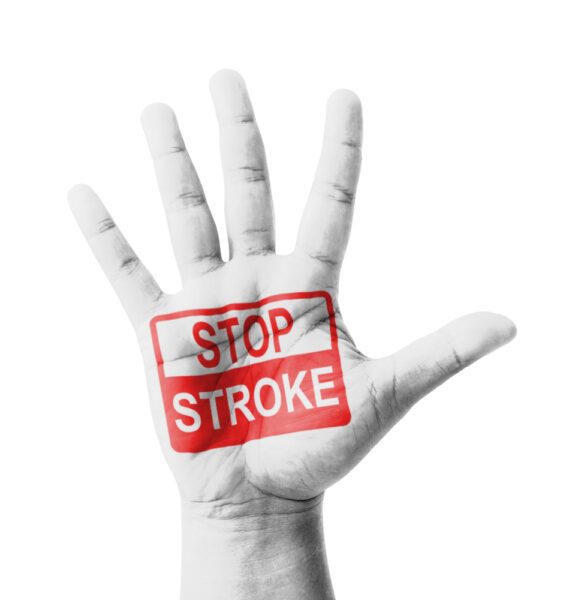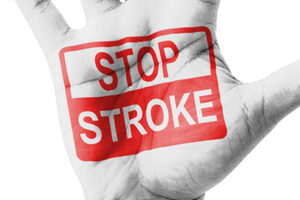Stay Healthy During National Stroke Awareness Month
 May is National Stroke Awareness Month. Each year, almost eight hundred thousand Americans experience strokes and, of that group, approximately one hundred thirty thousand of these individuals do not survive them.
May is National Stroke Awareness Month. Each year, almost eight hundred thousand Americans experience strokes and, of that group, approximately one hundred thirty thousand of these individuals do not survive them.
For those living independently, the thought of experiencing a stroke can cause anxiety. Regardless of where you are at, it is important to know essential facts about strokes, what their warning signs are, and what you should do if you think you are having one.
What Exactly is a Stroke?
According to the Mayo Clinic, a stroke occurs when the brain’s blood supply is either cut off or significantly diminished. This prevents the brain from receiving oxygen and bloodborne nutrients that help it function.
Strokes always indicate an emergency medical situation and require immediate treatment. It is never wise to delay a hospital visit if you think you are experiencing symptoms.
Causes of Strokes
According to the Centers for Disease Control (CDC), these are the main causes of strokes:
- High blood pressure
- Smoking/tobacco use
- Diabetes
- High cholesterol
- Obesity and sedentary lifestyle habits
Stroke Signs and Symptoms
The CDC advises that these are the most common warning signs of strokes for men and women:
Sudden Numbness in the Body
This can affect one’s face, arms, or legs. Though many conditions can cause a numbing sensation, a stroke is most often identified by a feeling of numbness on only one side of the body.
Unexplained Confusion
Because strokes affect the brain, they can also demonstrate cognitive symptoms. For many, this can be categorized by sudden and unexplainable confusion. Examples include trouble speaking, understanding what others are saying, or recalling basic information.
Sight Problems
Stroke patients may also encounter sight problems in one or both eyes. In most cases, this will cause unanticipated, sudden difficulties in vision.
Mobility Difficulties
Another symptom of strokes is sudden mobility issues. A person experiencing a stroke may have difficulty walking, experience a loss of balance, or unexpectedly struggle to maintain coordination in their limbs.
Severe Headache
A severe headache with no known cause can also indicate a stroke. Because the brain is in peril during an episode, your head may start to hurt.
Transient Ischemic Attacks
A person who is demonstrating signs of a stroke may be experiencing a transient ischemic attack (TIA). These are stroke-like symptoms that will go away in a short amount of time. If you or someone you know is experiencing a potential TIA, they should seek immediate medical help to treat them as it could indicate a more severe underlying condition.
Stroke Treatment
Stroke patients need to seek immediate treatment to increase their chances of survival and prevent any lasting damage to the body.
Identifying a Stroke at Home
The standard method for quickly identifying the likelihood of a stroke is to apply the FAST methodology. This includes:
- Face: Ask the person to smile. If only one side of their face moves, this could indicate partial paralysis.
- Arms: Ask the person to raise both of their arms. If only one raises, or if one droops downwards, this should be taken as a warning sign.
- Speech: Ask the person to repeat a short and simple sentence. Are they unable to? Slurring their words? Do they sound confused?
- Time: If the person is showing any of the above symptoms, call 911 right away.
At the Hospital
Strokes are considered emergency medical episodes. A doctor at the hospital will provide treatment to the patient. If the person survives the stroke, they will be discharged once the doctor declares them medically fit to return home.
Post-Hospital
Lasting Effects of a Stroke
Some patients may experience temporary or permanent long-term effects after suffering a stroke. The brain is a complex organ and thus can exhibit permanent changes if damaged.
Depending on the side of the brain that the person suffers the stroke, the American Stroke Association states that the individual may experience the following long-term effects:
Left Brain:
- Bodily paralysis on the right side
- Speech difficulties
- Slow and cautious behavior
- Memory loss
Right Brain:
- Bodily paralysis on the left side
- Vision difficulties
- Quick and inquisitive behavior
- Memory loss
A recovering stroke patient may also experience personality changes. As parts of the brain shape who we are as people, damage to some of them may affect an individual’s personality traits and alter their familiar behavior. During this time, it is essential to offer care and support to them as they recover and attempt to resume their lives.
Treatment for Stroke Patients at Home
Whether a person may be at risk of stroke or is recovering from a stroke at home, having the right care in place can ensure that they are being looked after with their safety prioritized. Our team of experienced home healthcare providers can provide care to individuals in Ohio and Maine who may be at risk of stroke or are in the process of recovering.
For more information, please contact us any time to speak with one of our team members.

